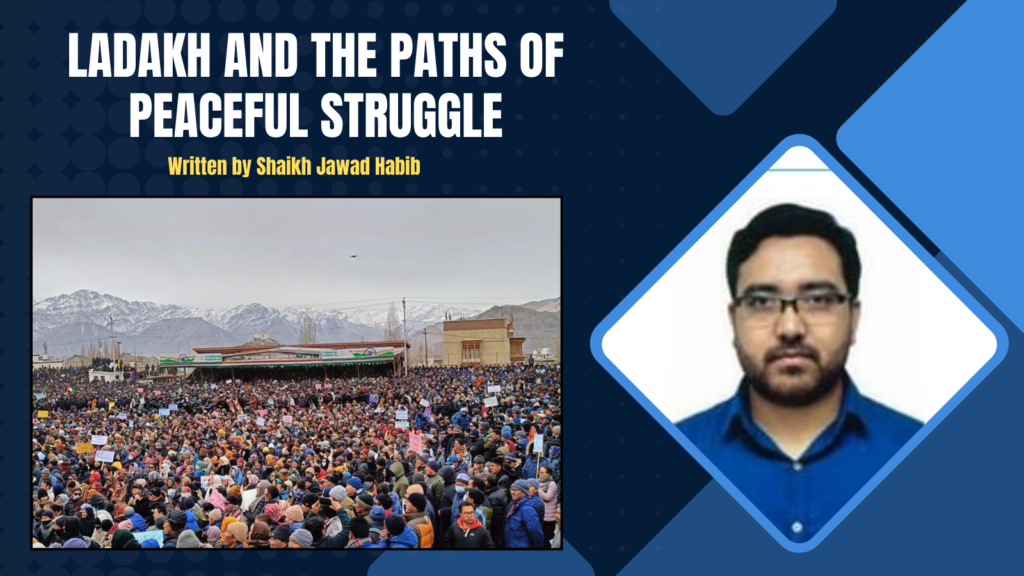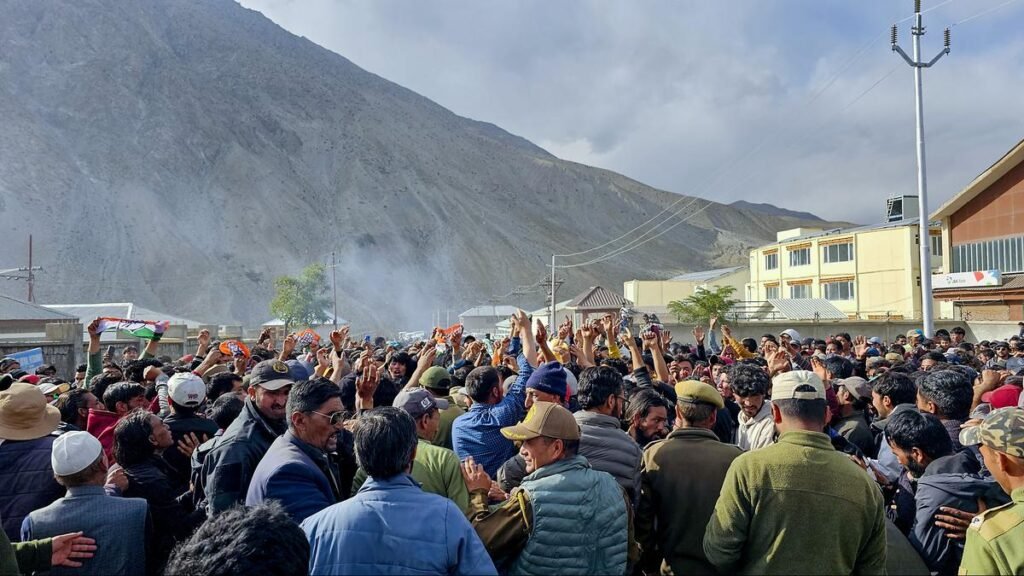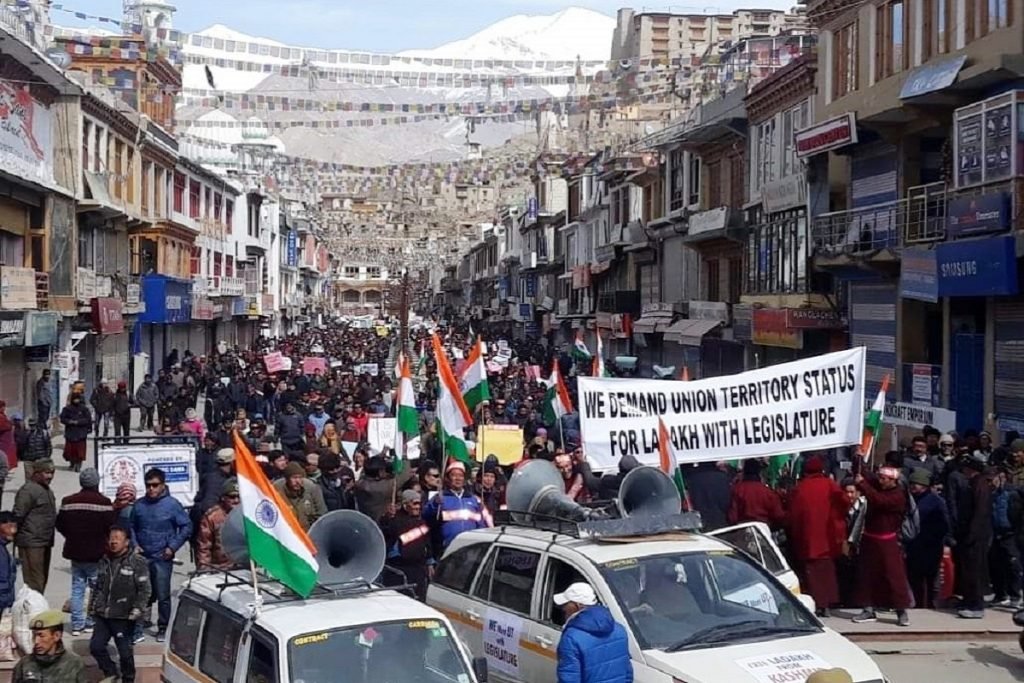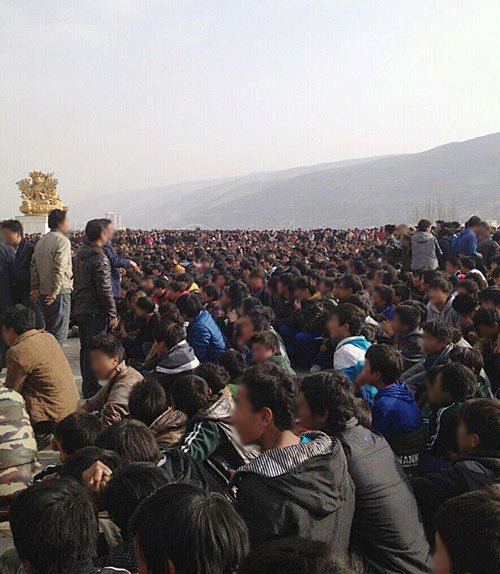
By: Muhammad Jawad Habib
Introduction
Ladakh, with its towering mountains, unique culture, and strategic geographical significance, holds a distinguished place in the world. Yet, in recent years, this region has also become a center of political and social challenges. The protests of September 24, 2025, which resulted in the deaths of five individuals and injuries to dozens, highlighted that the issues here are not merely administrative. They are deeply intertwined with political, economic, and cultural complexities. Security measures alone or police action cannot provide lasting solutions; what is needed is a comprehensive political strategy, local representation, and active public participation.
Following the 2019 separation from Jammu and Kashmir, there was initial hope among the local population. However, the absence of an assembly and local representation created a sense that key decisions were being made in Delhi rather than in Ladakh. There is no effective constitutional or administrative framework to safeguard land, resources, employment, and cultural identity. This lack of participation has led not only to limited investment and job opportunities but also to long-standing frustration. Today, public demands are largely focused on statehood, constitutional protection under the Sixth Schedule, and local autonomy.

Rising Youth Discontent
The youth of Ladakh are at the heart of this struggle. They are the guardians of their culture, language, and local identity, and perceive any external influence or rapidly changing population as a threat. A lack of political representation and the feeling that their voices are not heard leads to frustration and anger.
Economic deprivation further compounds the issue. Limited local employment opportunities push educated youth toward protests, and at times, even violent expressions of dissent. The absence of investment, skill development, and local opportunities heightens the risk of social unrest or migration, as young people feel that their talents and efforts are unrecognized.
Additionally, political marginalization fosters a sense of insecurity and exclusion, as locals are not included in key decision-making processes. These factors demonstrate that youth grievances are not merely emotional; they are deeply rooted in social, economic, and political realities. Harnessing their energy positively is essential for the region’s development, peace, and social cohesion.

Violence vs. Peaceful Struggle
The events of September 24 demonstrated that prolonged neglect of legitimate demands can lead to emotional outbursts and violent incidents. However, labeling youthful anger as “illegal” oversimplifies the issue. Behind these reactions lie economic deprivation, lack of representation, and uncertainty about the future. Violence is not the solution; peaceful struggle remains the most sustainable, effective, and ethically acceptable path forward.
Addressing the Government of India
Respected Government of India, the people of Ladakh urge your immediate attention to the following:
- Statehood and Constitutional Safeguards: Local demands for statehood, Sixth Schedule protections, and greater autonomy should be addressed through transparent dialogue.
- Economic Opportunities and Employment: Rapid implementation of employment programs, skill development initiatives, and local investment is essential to ensure economic self-reliance for the youth.
- Support for the Injured and Families of the Fallen: Immediate financial, medical, and social support must be provided to those affected during protests.
- Peaceful Dialogue and Welfare Measures: The protests should not be seen solely as a law and order issue but addressed as a political and social concern through dialogue and constructive action.
These measures will build trust, ensure social stability, and open the path for lasting peace and development in Ladakh.

Conclusion
The youth of Ladakh represent the region’s greatest strength. If their energy is channeled through peaceful struggle, it can guarantee social, economic, and political progress. It is the shared responsibility of both the government and the local community to provide guidance, transparent representation, and economic opportunities.
The time has come to transform Ladakh into a region where peace, justice, and progress are assured for all, and where the youth dedicate their energy to building and development. Peaceful activism and positive youth engagement are the keys to a brighter future for Ladakh.

لداخ اور پرامن جدوجہد کی راہیں
تحریر: محمد جواد حبیب
تعارف
لداخ اپنی بلند و بالا پہاڑوں، منفرد ثقافت اور جغرافیائی اہمیت کے لیے دنیا میں ممتاز ہے، مگر حالیہ برسوں میں یہ خطہ سیاسی اور سماجی چیلنجز کا بھی مرکز رہا ہے۔ 24 ستمبر 2025 کو ہونے والے احتجاج میں پانچ افراد کی جانیں ضائع اور درجنوں زخمی ہوئے، جس سے یہ واضح ہوا کہ مسائل صرف انتظامی نوعیت کے نہیں بلکہ سیاسی، اقتصادی اور ثقافتی پیچیدگیوں سے جڑے ہیں۔ صرف سکیورٹی اقدامات یا پولیس کارروائیاں مسائل کا مستقل حل نہیں ہیں، بلکہ جامع سیاسی حکمت عملی، مقامی نمائندگی اور عوامی شراکت ضروری ہے۔
2019 میں جموں و کشمیر سے علیحدگی کے بعد مقامی عوام میں ابتدا میں امید تھی، مگر اسمبلی اور مقامی نمائندگی کی کمی نے اہم فیصلے مرکز میں کیے جانے کا احساس پیدا کیا۔ زمین، وسائل، روزگار اور ثقافتی شناخت کے تحفظ کے لیے کوئی مؤثر آئینی یا عملی ڈھانچہ موجود نہیں۔ یہ محرومی نہ صرف روزگار اور سرمایہ کاری کی کمی کا سبب بنی بلکہ مقامی شمولیت کی غیر موجودگی نے دیرینہ بے چینی پیدا کی۔ آج عوام کے مطالبات ریاستی درجہ، چھٹے شیڈول کے تحت آئینی تحفظ اور مقامی خودمختاری تک محدود ہیں۔
نوجوانوں کی بھڑکتی ہوئی بے چینی
لداخ کے نوجوان احتجاج اور کشمکش کے قلب میں ہیں۔ نوجوان اپنی ثقافت، زبان اور مقامی شناخت کے محافظ ہیں اور غیر مقامی اثرات یا تیزی سے بدلتی آبادی کو خطرہ سمجھتے ہیں۔ سیاسی نمائندگی کی کمی اور سنی نہ جانے والی شکایات انہیں بے چینی اور غصے کی طرف لے جاتی ہیں۔
اقتصادی محرومی بھی ایک اہم عنصر ہے۔ تعلیم یافتہ نوجوانوں کے لیے مقامی سطح پر روزگار کے محدود مواقع انہیں احتجاج یا بعض اوقات تشدد کی طرف لے جاتے ہیں۔ مقامی سرمایہ کاری، ہنر مندی اور ترقیاتی منصوبوں کی کمی نوجوانوں میں سماجی بغاوت یا نقل مکانی کے امکانات بڑھاتی ہے، کیونکہ انہیں محسوس ہوتا ہے کہ ان کی محنت اور قابلیت کا کوئی مناسب فائدہ نہیں مل رہا۔
سیاسی نمائندگی کی کمی بھی نوجوانوں میں بے چینی پیدا کرتی ہے۔ مقامی لوگ اہم فیصلوں میں براہِ راست شامل نہیں کیے جاتے، جس سے غیر محفوظ اور محروم ہونے کا احساس پیدا ہوتا ہے۔ ان تمام عوامل سے یہ واضح ہوتا ہے کہ نوجوانوں کے مسائل صرف جذباتی نہیں بلکہ گہرے سماجی، اقتصادی اور سیاسی جڑوں سے جڑے ہیں۔
تشدد بمقابلہ پرامن جدوجہد
24 ستمبر کے واقعات نے واضح کیا کہ جائز مطالبات پر طویل عرصے تک ردعمل نہ ملنے سے نوجوانوں میں جذباتی پھٹنا پرتشدد شکل اختیار کر سکتا ہے۔ تاہم نوجوانوں کے غصے کو صرف “غیر قانونی” قرار دینا درست نہیں۔ اس کے پیچھے اقتصادی محرومی، نمائندگی کی کمی اور مستقبل کی غیر یقینی شامل ہیں۔ تشدد مسائل کا حل نہیں، بلکہ پرامن جدوجہد دیرپا، مؤثر اور اخلاقی طور پر قابل قبول راستہ ہے۔
حکومتِ ہند سے خطاب:
محترم حکومتِ ہند، لداخ کے مقامی عوام آپ سے چند فوری اور اہم اقدامات کی توقع رکھتے ہیں:
1. ریاستی درجہ اور آئینی تحفظ: لداخ کے عوام کے مطالبات، چھٹے شیڈول کے تحت مقامی خودمختاری اور ریاستی درجہ پر شفاف مکالمے کے ذریعے حل کیے جائیں۔
2. معاشی مواقع اور روزگار: فوری روزگار کے پروگرام، ہنر مندی کی تربیت اور مقامی سرمایہ کاری کو فروغ دیا جائے تاکہ نوجوان معاشی طور پر خودمختار ہوں۔
3. زخمیوں اور شہداء کے اہلِ خانہ کی مدد: احتجاج کے دوران زخمی ہونے والے نوجوانوں اور شہداء کے اہلِ خانہ کو فوری مالی، طبی اور سماجی معاونت فراہم کی جائے۔
4. پر امن مکالمہ اور فلاحی اقدامات: احتجاج کو صرف قانون و نظم کا مسئلہ نہ سمجھا جائے بلکہ سیاسی و سماجی بحران کے طور پر حل کیا جائے۔
یہ اقدامات عوام میں اعتماد اور سکون پیدا کریں گے اور لداخ میں دیرپا امن اور ترقی کے راستے کھولیں گے۔
نتیجہ
لداخ کے جوان خطے کی سب سے بڑی طاقت ہیں۔ ان کی توانائی اگر پرامن جدوجہد کے ذریعے استعمال کی جائے تو یہ سماجی، اقتصادی اور سیاسی ترقی کی ضمانت بن سکتی ہے۔ حکومت اور مقامی کمیونٹی دونوں کی ذمہ داری ہے کہ نوجوانوں کو رہنمائی، شفاف نمائندگی اور معاشی مواقع فراہم کریں۔
اب وقت ہے کہ ہم سب مل کر لداخ کو ایسا خطہ بنائیں جہاں امن، انصاف اور ترقی سب کے لیے یقینی ہوں، اور نوجوان اپنی توانائی کو تعمیر و ترقی کے لیے وقف کریں۔ پرامن جدوجہد اور نوجوانوں کی مثبت شمولیت ہی لداخ کے روشن مستقبل کی کنجی ہیں۔